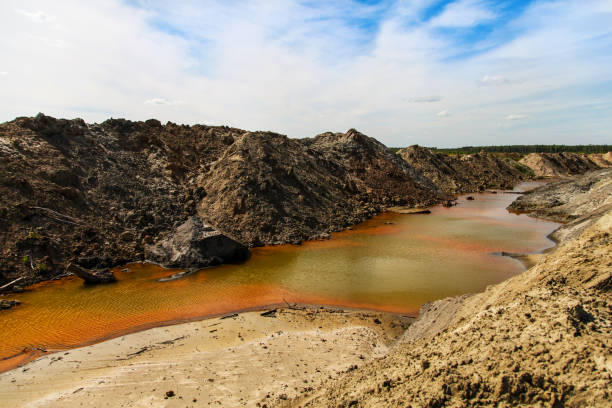Introduction
The Gulf region, comprising nations like Saudi Arabia, the UAE, Qatar, Kuwait, Bahrain, and Oman, is facing a myriad of environmental challenges that threaten its ecological balance and long-term sustainability. While these countries have made significant strides in economic development, the environmental costs are becoming increasingly apparent. Addressing these issues is not only crucial for the region’s ecological health but also for the well-being of its inhabitants and future generations.
1. Water Scarcity and Over-Reliance on Desalination
The Gulf states are among the world’s leaders in desalinated water production, meeting a significant portion of their freshwater needs through this process. However, desalination is energy-intensive and contributes to increased seawater salinity and ecosystem disruption. The region’s rapid population growth and escalating temperatures exacerbate water scarcity, making it imperative to explore sustainable alternatives such as wastewater reuse, rainwater harvesting, and the development of more energy-efficient desalination technologies.
2. Air Pollution and Health Impacts
Air quality in the Gulf is deteriorating due to emissions from industries, vehicular traffic, and construction activities. This pollution poses significant health risks, including respiratory diseases and cardiovascular problems. Implementing stricter emissions regulations, promoting cleaner technologies, and enhancing public transportation systems can mitigate these adverse effects and improve public health outcomes.
3. Land Degradation and Desertification

Overgrazing, urban expansion, and unsustainable agricultural practices have led to land degradation and desertification in several Gulf regions. These environmental issues reduce arable land, threaten biodiversity, and impair the land’s ability to support local communities. Initiatives like the Saudi Green Initiative aim to combat these challenges through afforestation, soil restoration, and sustainable land management practices.
4. Biodiversity Loss
The Gulf’s unique ecosystems, including coral reefs and mangrove forests, are under threat from coastal development, pollution, and climate change. Protecting these habitats is essential for maintaining biodiversity and supporting fisheries that are vital to the region’s economy. Efforts to establish marine protected areas and enforce conservation laws are steps in the right direction.
5. Climate Change and Extreme Weather Events
The Gulf region is experiencing more frequent and intense heatwaves, droughts, and heavy rainfall events. These climate change-induced phenomena strain water resources, disrupt agriculture, and pose risks to infrastructure. Investing in climate-resilient infrastructure, enhancing early warning systems, and reducing greenhouse gas emissions are critical measures to adapt to and mitigate the impacts of climate change.
6. Waste Management and Plastic Pollution
Rapid urbanization and consumption have led to increased waste generation in the Gulf. Inefficient waste management systems contribute to plastic pollution, affecting marine life and polluting beaches. Implementing comprehensive recycling programs, reducing single-use plastics, and promoting public awareness can significantly reduce waste and its environmental impact.
7. Energy Transition and Sustainability
While the Gulf countries are major oil producers, there is a growing recognition of the need to diversify energy sources. Investments in renewable energy, such as solar and wind, are essential for reducing dependence on fossil fuels and decreasing carbon emissions. Initiatives like Saudi Arabia’s $2.5 billion commitment to the Middle East Green Initiative reflect a commitment to sustainable energy practices.
8. Groundwater Contamination

Excessive agricultural and industrial activities, landfill seepage, and seawater intrusion have led to the deterioration of groundwater quality in the Gulf Cooperation Council (GCC) countries. Contaminants such as heavy metals and radioactive elements pose significant risks to human health and ecosystems. Addressing this issue requires stringent regulations and long-term mitigation strategies to protect groundwater resources.
9. Habitat Loss Due to Coastal Development
Rapid coastal development, including land reclamation and infrastructure projects, has led to the loss of critical habitats such as mangroves and seagrass beds. These ecosystems provide essential services like coastal protection and carbon sequestration. Implementing sustainable development practices and establishing protected areas are vital to preserving these habitats.
10. Food Sustainability Challenges
The Gulf region faces challenges related to food sustainability, including high levels of food waste and reliance on imported food. Countries like Saudi Arabia and the UAE have some of the highest per capita food waste rates globally. Promoting sustainable agriculture, reducing food waste, and enhancing food security are crucial for the region’s long-term sustainability.
Conclusion
The Gulf region stands at a critical juncture in its environmental journey. Addressing challenges like water scarcity, air pollution, and biodiversity loss requires coordinated efforts, innovative solutions, and a commitment to sustainability. By prioritizing environmental stewardship, the Gulf can ensure a resilient and prosperous future for its people and the planet.
Kuwait’s Vehicle Market: A Crucial Driver of Economic Growth



